Our Blog - Côte d'Azur, France
We decided to do a quick vacation along the Côte d'Azur, or what is known in English as the French Riviera. The literal translation is "Azure Coast", the "azure" being the blue color of the water in the Mediterranean. It goes from Toulon or Saint-Tropez across to Menton at the France-Italy border. There are lots of seaside resorts and it is quite packed during the summer. This coastline was one of the first modern resort areas. It began as a winter health resort for the British upper class at the end of the 18th century. With the trains, mid-19th century, it became a vacation spot of aristocrats, such as Queen Victoria, Tsar Alexander II, and King Edward VII when he was Prince of Wales. In the first half of the 20th century, it was frequented by artists and writers, including Pablo Picasso, Henri Matisse, Francis Bacon, Edith Wharton, Somerset Maugham, and Aldous Huxley.
The history of the area has Greek and Roman influences. For example, the name of the city of Antibes comes from the Greek term "Antipolis" and the Greek city of Nice. The term "Antipolis" means "Opposite City" and references the position of the city of Antibes on the opposite side of the Var estuary from the Greek city of Nice. The Romans had several settlements and there are various monuments and amphitheaters that have survived, including several in Fréjus. Nowadays, you can find large mansions along the coast, owned by the rich and famous (like Elton John, Bono, Brad Pitt and Angelina Jolie, and Bill Gates).
We stayed at the same hotel for the first 3 nights and Lucy approved of the bed linens.

After dinner meeting a Facebook friend, Janice, we spent our first full day in the city of Antibes, which dates back to a Greek settlement around the 7th century BC.
The weather on this trip wasn't the best, with quite a bit of rain. One thing that the rain didn't impact was our tour of a perfume factory and a few things in the village of Grasse.
Then we did a set of 3 hilltop villages slightly North of Antibes (West of Nice). They included the medieval village of Haut-de-Cagnes, the Middle-Age fortified village of Vence, and the lovely-but-touristic village of St-Paul-de-Vence.
Another city dating back to Roman times, the city of Fréjus still has several Roman ruins, including a theater, aqueduct, and arena. What is nice here is that they have done work on the arena (the amphitheater) to be able to hold events there, like rock concerts with the likes of Rod Stewart and Queen.
Our last large town was the coastal town of Hyères, which is another old town with some of the medieval city walls/gates visible.
In 2017, the New York Time had an article on Bandol wines as part of a monthly column called "Wine School". This was the first we had heard of Bandol and so since we were heading through the area, we decided to stop at a few places to do a wine tasting. It is known for the red and rosé wines, which focus on the mourvèdre grapes.
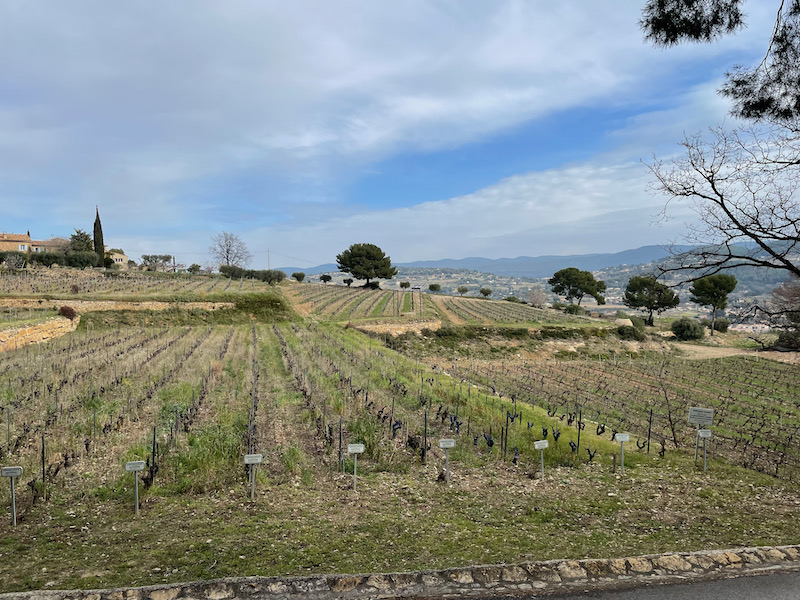
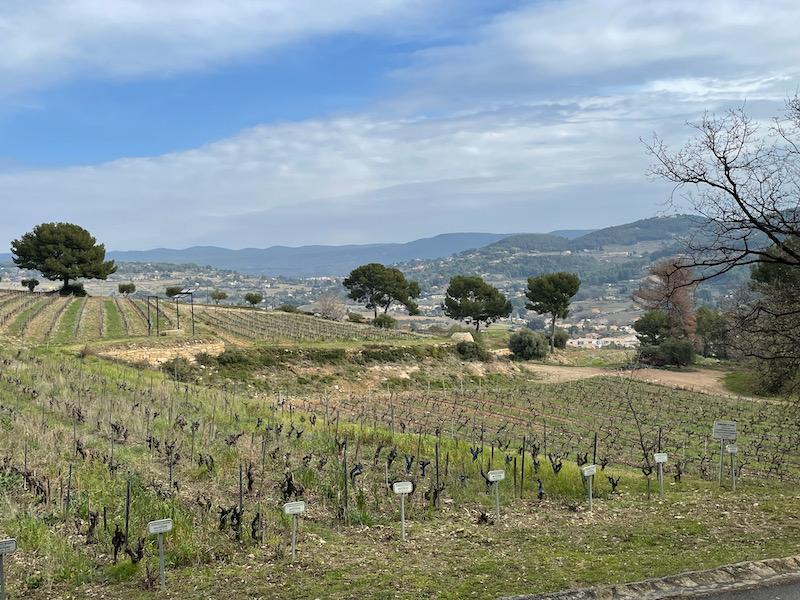
We did a Lucy-walk near "the Blue Lagoon", which is an old bauxite quarry near the village of Les Baux-de-Provence (bauxite got its name from the name of the town). The water color is quite blue but it isn't very easy to hike down to the bottom since it has sheer cliffs on 3 sides, and the 4th side isn't specifically easy to walk down.
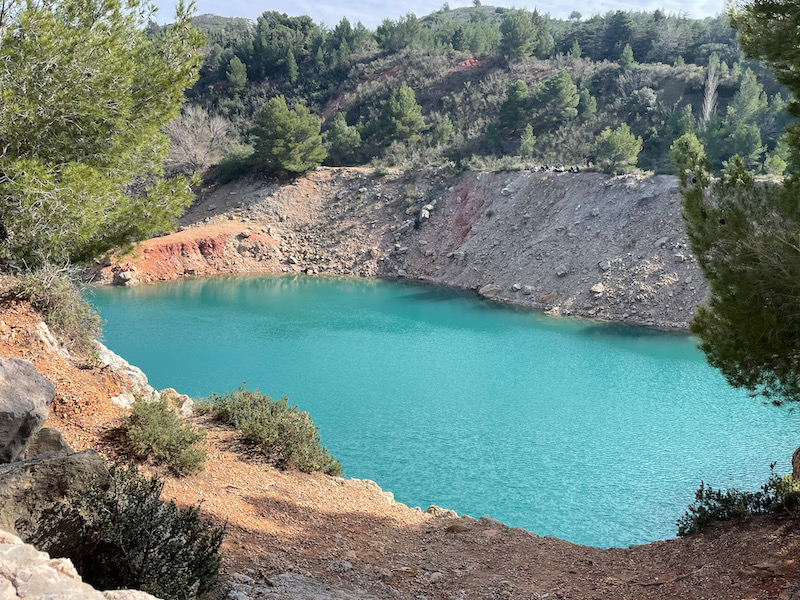
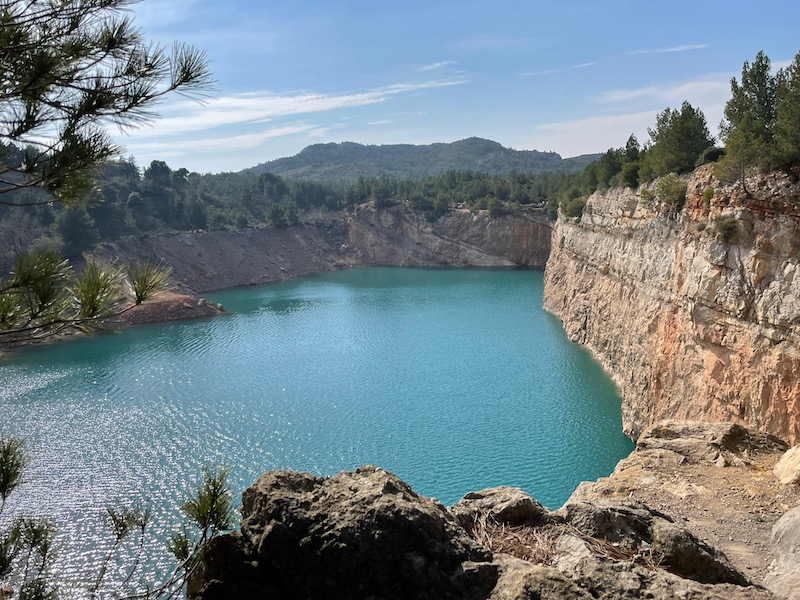
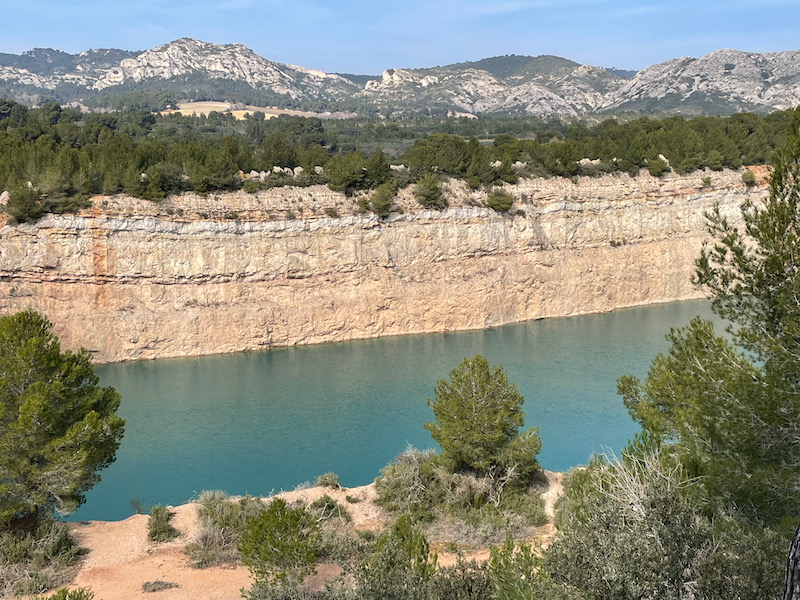

Chapel of Saint-Gabriel de Tarascon is a Romanesque chapel where we started a morning Lucy-walk. The chapel is from the 12th century and is a great example of Provençal Romanesque art. I mentioned earlier the Roman presence in the area ... the chapel is located at an important crossroads of the via Domitia (the Roman road from Italy to Spain via the Alps) and via Aurelia (Italy to France along the coast), and the via Agrippa (which went up the Rhone valley). There was an earlier chapel built here in the 7th century but it was destroyed. The façade has the door, surmounted by a sculpted tympanum, then a triangular pediment. In the triangular pediment is a sculpted bas-relief representing the Annunciation and the Visitation, with the lamb at the very top. Then within the semi-circular tympanum is a bas-relief of Daniel in the lion's den and Adam and Eve around the Tree surrounded by the Serpent.
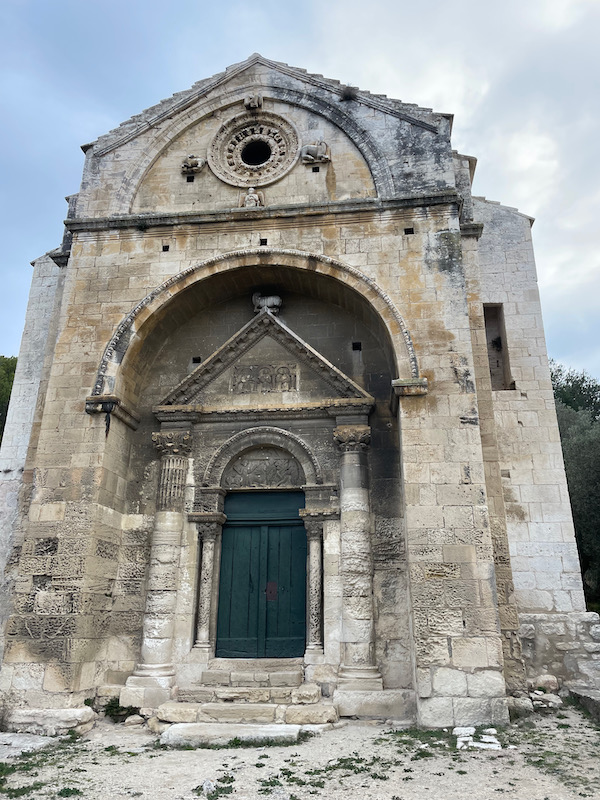
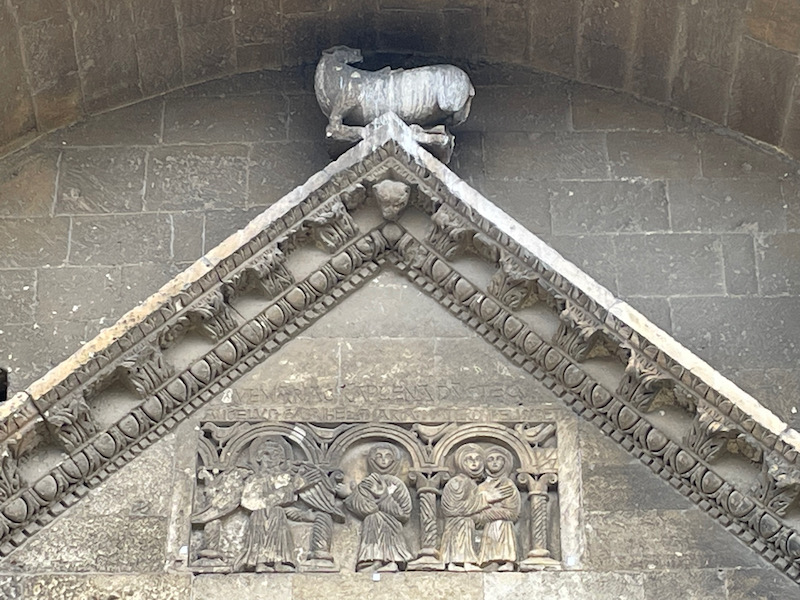
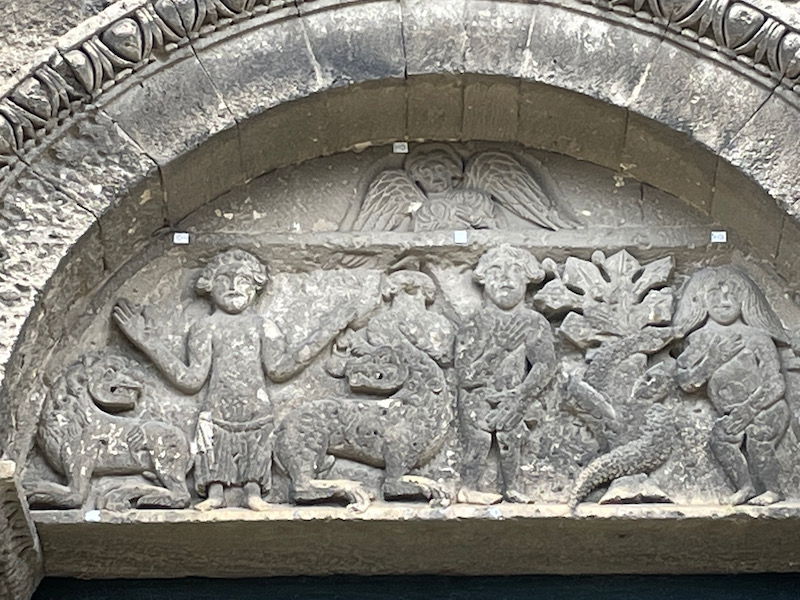
Last stop on our way home was the Plus Beau Village of Saint-Guilhem-le-Desert.